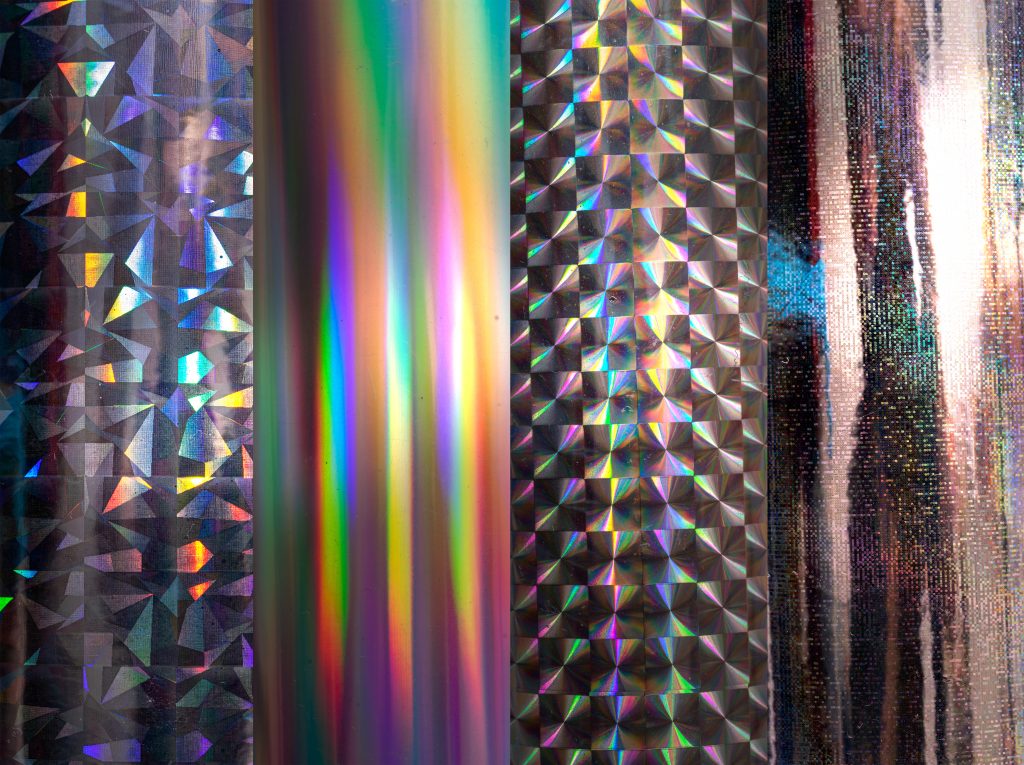1st December 2021
What’s Bling Got to Do with It?
Earlier this year, Mari-Anne Snäll, Marketing Manager at Crane Currency, was invited to present at the 60th anniversary forum of the International Bank Note Society (IBNS). As an active member within the currency community, she offered her personal reflections on how showy features used to attract consumers are slipping, at times dangerously, into the feature-effects used to prevent counterfeiting.
What is Bling?
According to Merrier-Webster’s online dictionary, bling is flashy jewellery worn as an indication of wealth or status. It refers to expensive and ostentatious possessions – but more simply it refers to very showy stuff and has an etymology tied to imitation.
Showy displays can blur the line between the real and fake, using bling to appear stronger and wealthier than is the case.
At Crane Currency we place enormous effort on ensuring that our customers’ banknotes cannot be imitated, so bling’s connection to imitation and attracting attention is interesting to us.

Bling is all about being noticed…
Early advertisers were at the forefront of establishing a profitable use of bling and bling has fuelled a multi-billion dollar industry around capturing our attention.
Consumer packaging has engulfed us with bling – all in the pursuit of capturing our attention. The basic recipe is one of plastic film, shiny aluminium, and embossing to create a surface that manipulates light to create a myriad of attention-grabbing effects.
This combination is today everywhere and extends beyond large industries into the home and office with countless hot foils and inexpensive application methods marketed to scrap-book enthusiasts, invitation makers, desktop publishers, and more.
But what about banknotes?
Using a little bling to communicate financial strength is understandable. And with banknotes we come across many examples of bling; banknotes with shiny optically variable features, for the most part all relying on shiny metallization to make them standout.
This is why we are seeing more and more ‘Bling banknotes’ those banknotes using bright and shiny features. There is good sense to this, ease of use is a major requirement of public security features; however, while security features should say “Look at me!” – in many cases they are really saying “Notice me!”.
But here’s the thing, Easy to Notice is not the same as Easy to Use, and here is why.
No one looks at banknotes
We only glance at our banknotes a 1/3 of a second.
Cash usage has been analysed many times. The amount of time we take to conclude a cash transaction is between 10-20 seconds. Of that time, we only devote about 1 second to ‘look’ at the cash. And, of that one second, most of it is to check the value of the banknote (its denomination).
We use only a fraction of a second to authenticate our money. Truly, we verify our banknotes in a glance and cognitive science puts a ‘glance’ at about 300 milliseconds, about 1/3 of a second.
‘Bling’ features are easy to notice, but also easy to simulate
Counterfeiters know how we behave. They know we don’t really look at our banknotes. Their job is to make fake banknotes that look and feel convincing enough to pass. They know bling can play directly into deceiving us. They know we do not look, that we only glance and may notice only the ‘bling’.
Greater access to decorative, metallized materials that can be readily manipulated into ‘good enough’ feature simulations is narrowing the distance between the genuine and the fake. Added to this, Bling Banknotes don’t perform well in all conditions. Their shiny effects need good lighting, the brighter the better to let their effects look their best. But life rarely happens under a spotlight. More commonly we’re spending our cash in shops, restaurants, taxis, and busy markets with very imperfect lighting. Counterfeiters know this too. This combination becomes dangerous when the public understanding of bling features is only to notice them.
The Future of Banknotes
Modern banknotes increasingly need to be held in your hand, at least tilted, to truly appreciate them. Rapid movement cannot be well depicted in 2D images, yet in practice work very well for the public.
Micro-optics provide both rapid movement and 3D effects that are so strong that they can be very accurately verified as genuine in just a glance, without even tilting. A claim supported by scientific testing.
Looking to the future, cash will still be cash – maybe not used as much, but still private, safe, available to all, and electricity-free. A strong use of customization and integration of security features that connect to the theme of the banknote will be important – even more so, as cash is used less. The key security features on banknotes will have to encourage intuitive authentication. In just a glance and in all environments, the strongest features will not provide the false sense of security projected by bling.
Click here for more information on Crane Currency’s micro-optic security features.
